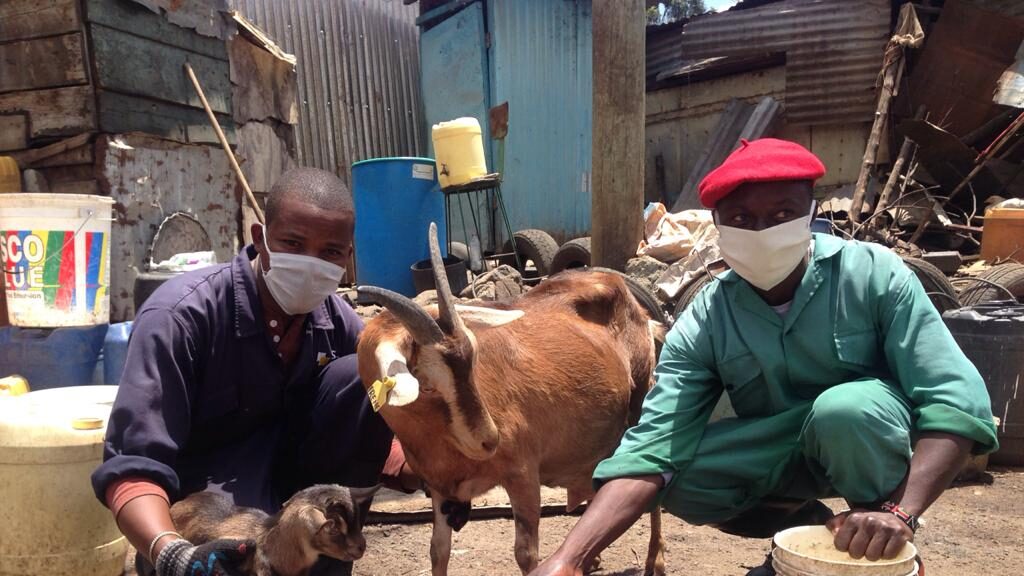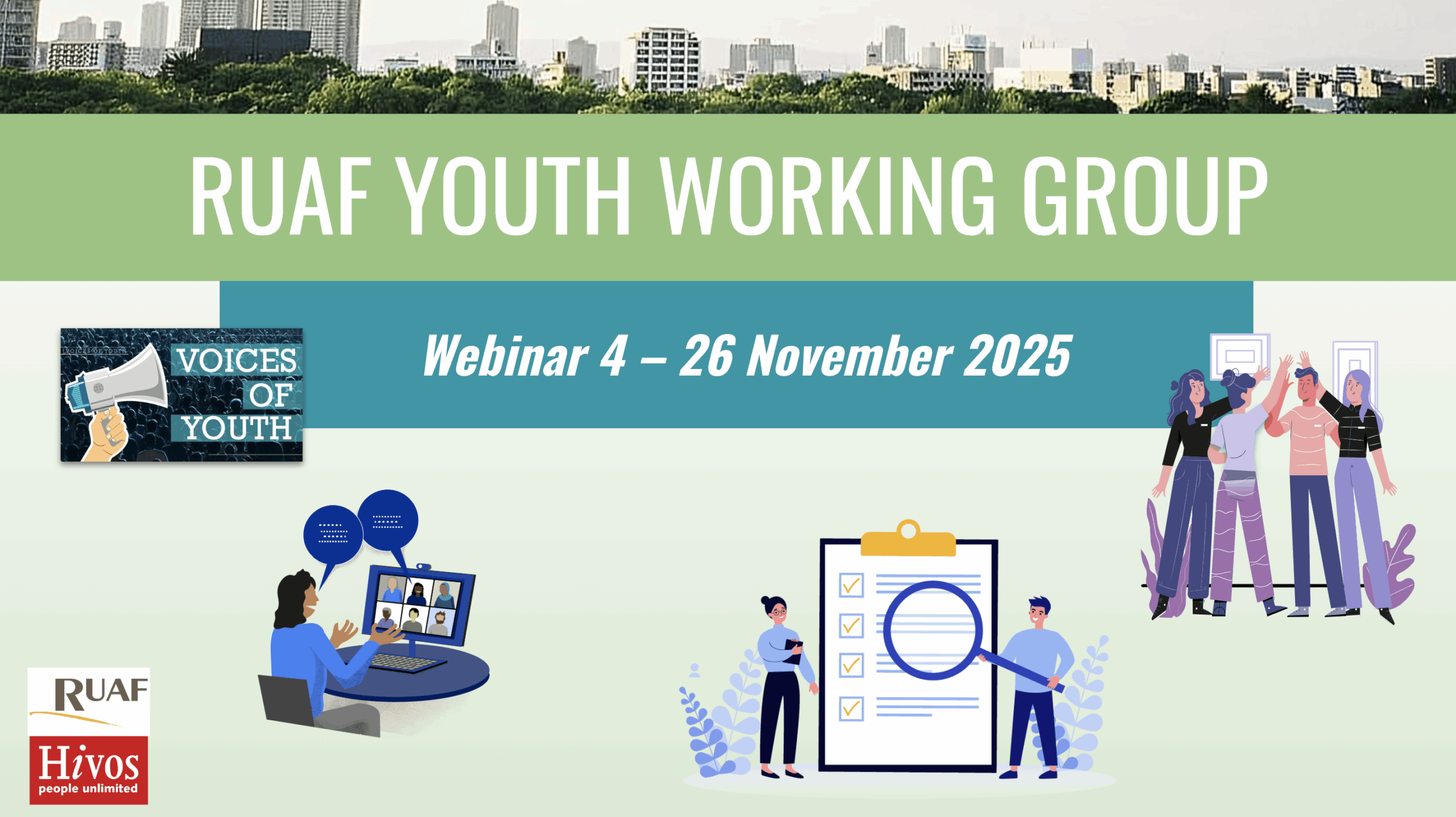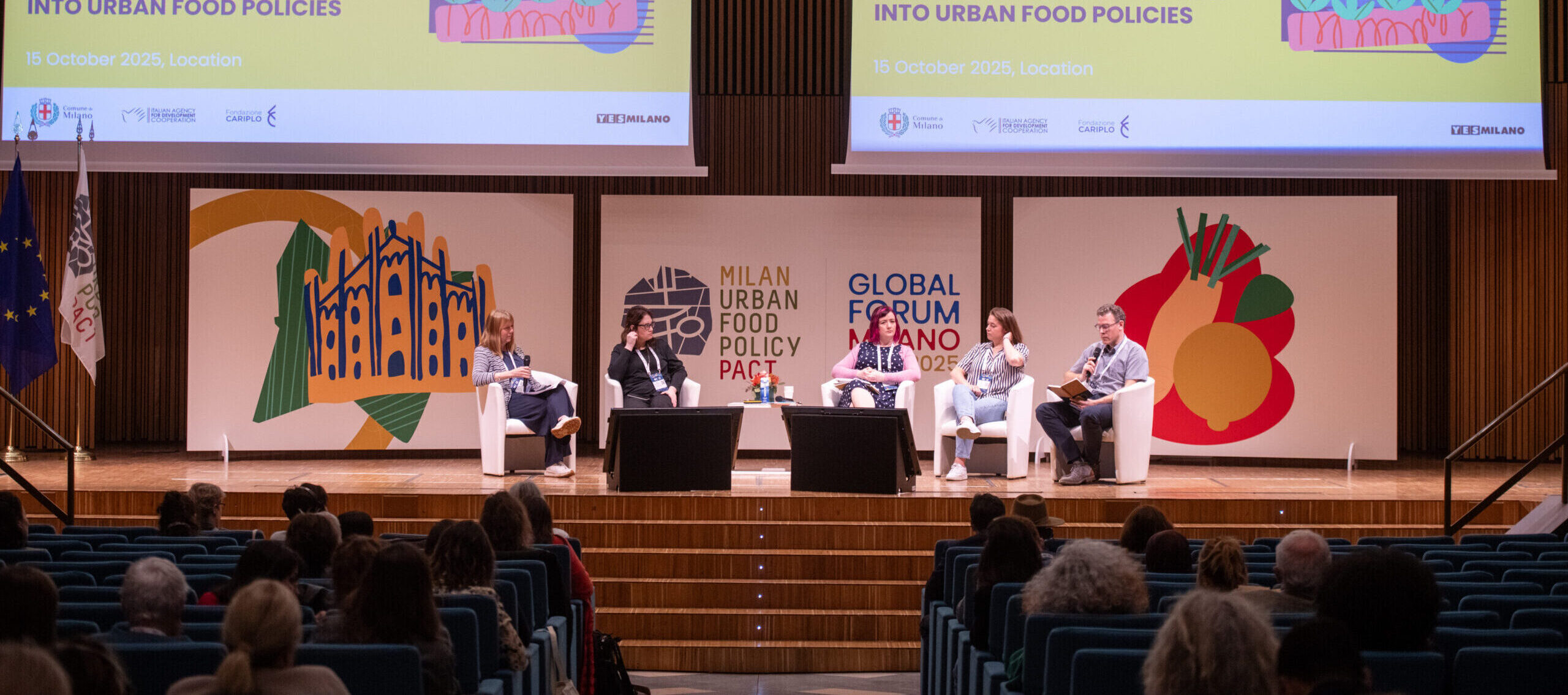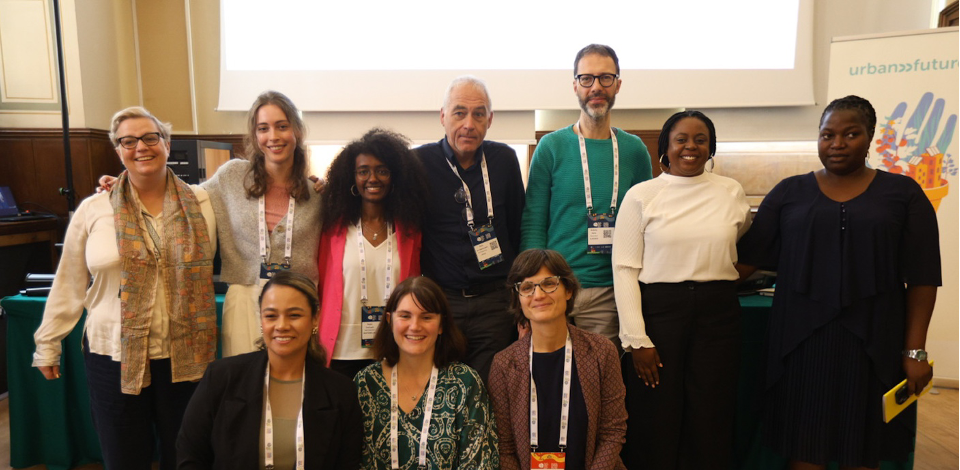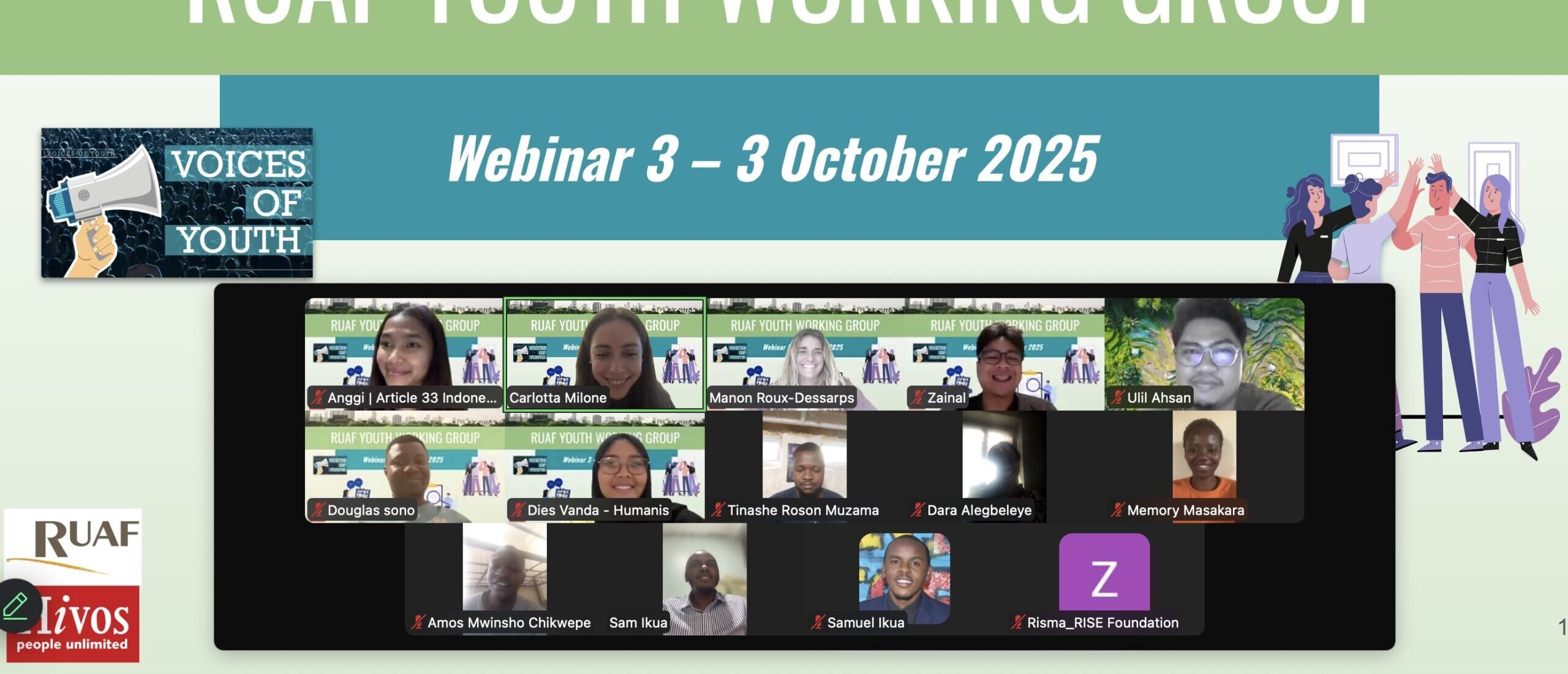Written by: Alison Blay-Palmer, Jess Halliday, Guido Santini, Makiko Taguchi, and René van Veenhuizen
This blog has been developed by RUAF Partners with FAO and is also posted at the FAO City-region food system website, where you also find a series of blogs on various city and country experiences.
The COVID-19 pandemic is affecting daily lives around the world in unprecedented ways and presenting new challenges to social and economic systems, including the globalised, industrialised food system. A variety of responses, both short- and long-term, have been proposed and debated by the food policy and planning community.
The City Region Food System (CRFS) approach – developed by FAO and RUAF (with the Wilfrid Laurier University Centre for Sustainable Food Systems and the CGIAR Water Land and Ecosystems programme led by IWMI) – provides a framework to: understand the vulnerability of urban food systems; enhance communication and cooperation; and coordinate immediate action to safeguard food security and nutrition.
In the long term, the CRFS approach provides a participatory platform to define policies, interventions and mechanisms of territorial governance for food system transformation, reinforcing cooperation and collaboration among different local governments and other actors, which is one of the key elements to build resilience of the local food system to shocks, including pandemics, epidemics, and climate events.
Failure of current food systems
Since the start of the COVID-19 crisis, accounts are emerging of challenges to food supply chains that have major implications for food security and nutrition. These include:
- limited agricultural labour (often supplied by seasonal migrants) due to restrictions on human mobility and physical distancing;
- limited access to agricultural inputs due to restrictions to inputs producers, transportation and import limitations;
- congestion and disruption in food logistics and delivery, including an increased demand on emergency food provisions such as food banks;
- closure of markets (formal and informal, wholesale and farmers’) due to physical distancing and lack of preventative equipment.
Some cities are particularly susceptible to supply problems, due to limited diversification of value chains and supply channels, high or exclusive dependence on food imports, as well as long, complex supply chains that are perennially vulnerable to sudden shocks, whether due to social, political, economic or natural events. These problems are also exacerbated in cities that have limited linkages and cooperation with their surrounding rural hinterlands where production and processing of key food commodities consumed in the city may occur.
High population density in urban areas also presents an elevated risk of contagion during usual food provisioning or purchasing activities. Undoubtedly the urban poor – and especially those living in informal settlements – face an elevated risk both of infection and of food insecurity. Their ranks are set to swell as the economic crisis caused by global shut-down plunges millions into unemployment.
Need for a coordinated response
A rapid response is needed to shore up cities and city region food systems over the coming months, followed by actions to ensure increased resilience to the impact of pandemics and other shocks in the longer term.
Most local authorities, including city governments, are not sufficiently equipped for the challenge. Despite increasing interest and action to improve their food systems and to develop food policies (within the bounds of devolved powers and competencies), food is not yet part of mainstream urban and territorial planning. Cities remain overwhelmingly subject to national level food policies; and a common response of national governments to COVID-19 has been to call on supermarkets to ensure shelves remained stocked with essentials, seemingly oblivious to the endemic supply chain issues and the impacts on actors, especially those whose livelihoods are tied to the informal food sector.
At the community level, meanwhile, citizens, NGOs and informal networks have swung into action and are exploring alternatives ways of keeping food on the table. There has been an unprecedented surge in interest in fruits and vegetable boxes from short food supply chains, and in home vegetable growing, in food solidarity and neighbourly assistance.
Helpful though this may be, there is a notable lack of coordination between actors and institutions involved in the food supply as well as insufficient financial support to promote such initiatives. Moreover, they are opportunistic – finding markets for available produce, rather than building infrastructure, capacity and connections for peri-urban and regional food provisioning in the long term. There are no assurance that such ad hoc schemes will endure or being able to ensure urban food security and nutrition for all over an extended period.
City regions as part of a multi-level response
The disruption to food systems from COVID-19 highlights the need to reconnect local production and consumption. The proposition is not self-sufficiency or protectionism but to ensure urban areas are not solely reliant on distant sources, with no recourse in case of failure. Cities and city regions that actively plan for resilient food systems will help ensure that (a) the food supply chain is diversified and resilient to future shocks; that (b) food access remains at, or swiftly returns to, pre-disaster levels, and (c) the impact on vulnerable food systems actors is mitigated, including small-holder producers, informal traders, and low-income and marginalised groups.
This will require coordination and support, between governments and organisations at all levels. It cannot be achieved either by national government decree or isolated local government intentions. Rather, government officials, NGOs, and food system stakeholders must connect and collaborate across urban, peri-urban and near rural areas, creating cross-jurisdictional and territorial food planning, coordination and governance.
To facilitate this, the CRFS approach and toolkit has been developed based on a participatory multi-stakeholder process. It provides a method and tools to: (a) assess linkages and resource flows between rural and urban areas, key actors, policies and legislation, sustainability, risks and current and future vulnerabilities; and (b) plan policy actions to build resilience and sustainability.
In particular, the approach can help organise food systems in a more effective and sustainable manner to meet producer and consumer demands, by promoting local food production (especially family farmers and small-holders) and shorter supply chains, strengthening urban-rural linkages, and maintaining (or creating) diversity in the food supply chain and channels of distribution (from farm to fork). In the long term, the CRFS approach helps define policies, interventions and mechanisms of territorial governance for food system transformation, reinforcing cooperation and collaboration among different local governments and other actors, which is one of the key elements to build resilience of the local food system to shocks, including pandemics, epidemics, and climate events.
On-going work to strengthen resources on resilience to climate shocks and stresses in the CRFS toolkit, in close collaboration with local governments, can also be applied to understanding the impact of COVID-19, and can serve as a basis for planning and monitoring.
COVID-19 and City Food System, impacts of and responses: a selection of city experiences
Representatives of cities that have applied the CRFS Framework, or that have been working with RUAF partners in other programmes, started to report on how the COVID-19 pandemic is affecting the city food system – and the ways in which the knowledge, resources and capacity can aid their immediate response to the unprecedented threat to food security, including how a City Region Food System approach or perspective could assist. What follows is a first set of responses from RUAF partners and cities around the world. More will follow in the coming weeks.
The CRFS approach can contribute to the design and implementation of a ‘post-COVID-19’ strategy in Antananarivo, Madagascar, which may serve as an effective tool to reinforce food system resilience in general. Particularly helpful elements are food flow mapping, determining product quantities, and tracing the role of each actor involved in the food chain. Actors engaged in transportation and distribution will provide solutions to ensure food distribution in periods of crisis.
The Food System Department of Nairobi, Kenya applied the City Region Food System Indicators (supported by Mazingira Institute,RUAF, FAO, and the CGIAR WLE programme), They collected data on food traders and monitored agriculture training and outreach. Even though the indicators clearly showed that it is the informal sector that makes the food system work, the Food System Department was not able to respond during the crisis. The general response of government was to shut everything down, including food markets. A curfew stopped “mama boga” (women vegetable sellers) getting the supplies they need early morning and selling in the low-income neighbourhoods after dark. CRFS indicators showed women are the main informal sector distributors and they operate at that time. Urban livestock keepers have told Mazingira Institute that the families they supply with milk in the poor neighbourhoods are not getting the needed input supplies or any help from the City extension services. These have not been prioritised as “essential services” and so they are not at work. The Food System Department is not active so it is civil society organisations, farmer networks and traders that are trying to fill the gaps in the operation of the food system. It is tremendously important to keep on documenting information from the informal sector and try eventually to re-establish links to the City officials.
In Kitwe, Zambia, despite the limited spread of the virus, fear, restricted transportation and/or physical distancing has affected the supply and distribution of fresh food, mainly fruits, vegetables, meat and dairy products. In addition, many smallholder famers in the city region that are involved in fresh food production, are also particularly affected as most of them constitute households with highest incidences of poverty. This can be further exacerbated as Zambia is approaching the harvest season. The risk is to significantly lower farm gate product prices and to increase farm level losses particularly for perishable products. The challenges faced by the country regarding food supply are mainly being dealt by the central government. Nevertheless, despite the limited power of the local government, the multi-stakeholder platform that has been created by the city to coordinate actors in the CRFS is becoming instrumental in fostering coordination among actors in the supply chain in defining strategies and coordinated actions to mitigate COVID-19 impacts and dealing with post pandemic scenarios.
In Colombo, Sri Lanka, there is a strong alignment between the measures introduced by a government taskforce to ensure sufficient availability of staple foods (and fruits and vegetables, since there has been no shortage of this) and the CRFS approach. The taskforce is taking a systemic approach to ensure that communities have access to food using alternative supply chain linkages by coordinating with multi-stakeholders across administrative boundaries. It addresses issues such as farmers’ access to inputs, food affordability, waste management and establishing hubs for the distribution of farm products.
The vulnerability assessment of Toronto’s food system, completed in 2018, has helped frame the action towards engaging food system actors more broadly and at a community-level. In the fall of 2019, Toronto adopted food as a lens that each division must report on. Despite this increased food awareness in Toronto, the biggest impact of COVID-19 has been on the increased demand on emergency food provisions for low-income, homeless and unemployed. More households are facing food insecurity given the loss of income and employment during the pandemic. This means more demand on the city’s food banks, community food agencies, the Red Cross and Salvation Army. Local efforts are emerging to meet the growing need for food and has led to many organisations pivoting their services to emergency food provision. The services provided at through these agencies includes food hampers, food boxes and meal preparation and distribution by commercial and community kitchens. The Toronto Food Policy Council has focused advocacy efforts on re-opening farmers markets and community gardens which were closed since they were not designated essential services by the provincial government. The advocacy efforts of urban food growers in Toronto and surrounding region resulted in the re-opening of community gardens in Ontario. On April 26th, the Provincial government adjusted its emergency orders to allow the opening of community and allotment gardens. An additional key concern centres on the health of migrant workers. In 2019, 69,000 temporary migrant workers came to Canada to work in the agricultural sector. Employers were given discretion over the March 2020 health and safety guidelines for migrant workers leading to increased concerns for worker well-being. A more robust CRFS approach could reinforce the importance of a more integrated strategy for the adaptive capacity to shocks by regional food system feeding Toronto.
Access to food has also been affected in Quito, Ecuador, where public places being locked down meant that the bioferias, or local markets, could not continue. On the other hand, more scale-based and family-scale forms of distribution are now supplying the food needs at that level, which is very important because of people’s level of vulnerability. As part of the CRFS project and the related work on indicators, Quito conducted a mapping of these markets as well as of vulnerable communities. This has proven invaluable for identifying vulnerable groups to target for emergency food distribution, as it appears that the Quito special operations committee has not made provisions for the elderly or disabled people who cannot go out. The development and facilitation of the food policy council allowed for the coordination of special directives and communication, including asking attention for vulnerable households and informal sector (markets). However, it was also found that quick and more centralised responses are needed.
Food banks and community organisations in Melbourne, Australia report a significant increase in demand for food relief due to the economic crisis and rising unemployment. The Victorian state government is providing emergency food boxes to vulnerable people, but government response has been patchy. Some farmers markets in Melbourne have been closed down by local governments, reducing opportunities to buy fresh local food and leaving farmers without their usual sales outlets. There have also been significant price increases for some fruits and vegetables (also because of recent drought and bushfires). An alliance of social enterprises, the Moving Feast collective, provide food relief to low income households by delivering produce boxes, emergency meals and backyard gardening kits. There has been a huge increase in farmers and farmers markets going online on the Open Food Network to overcome physical distancing restrictions. A city region food system approach could help Melbourne to strengthen the resilience of its food system to these multiple shocks. Local production and distribution of food within the city region could increase fresh food supply and reduce dependence on more distant sources of food.
Photo by Mazingira Institute Nairobi: Youth urban farmers in Nairobi feeding their dairy goats.

